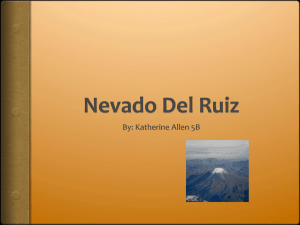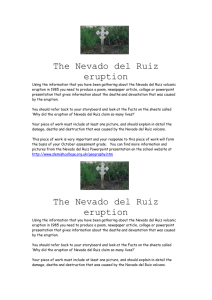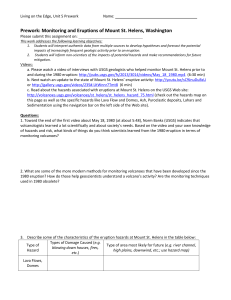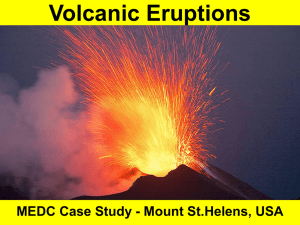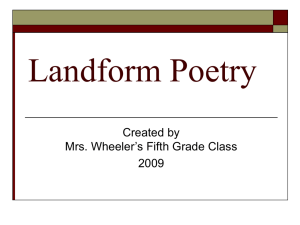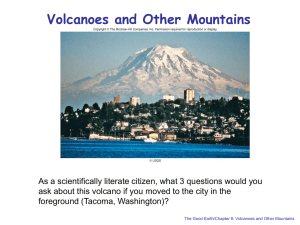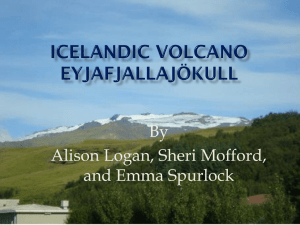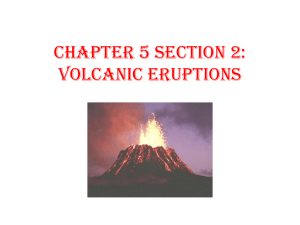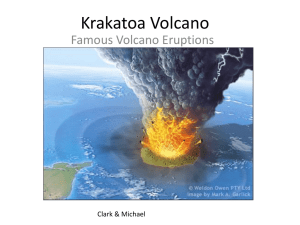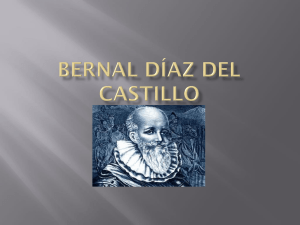Mount St Helens and Nevada Del Ruiz : Living with a Volcano
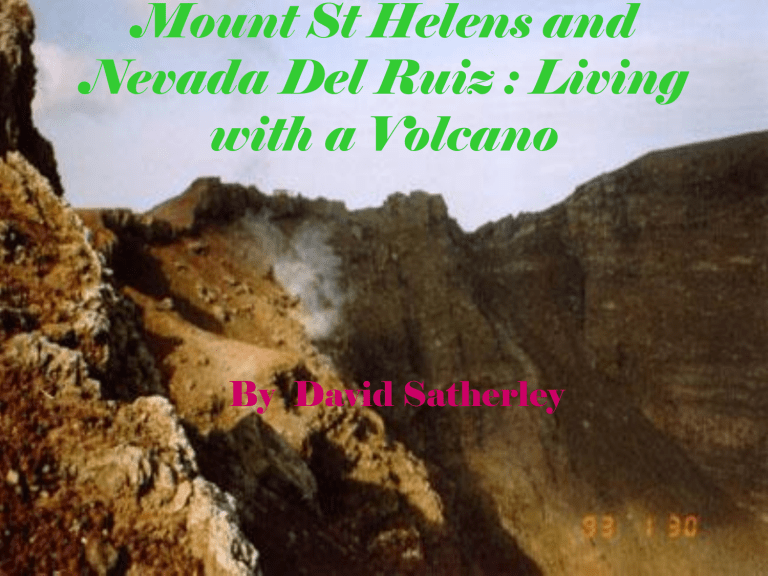
Mount St Helens and
Nevada Del Ruiz : Living with a Volcano
By David Satherley
• In this project I will be talking about the difference in the way
M.E.D.C’s and
L.E.D.C’S cope with the threat of volcanic activity. As examples,
I will be using Mt St
Helens and Nevada
Del Ruiz and how they shocked those who witnessed them.
Introduction
Mount St Helens Location
• Mount St Helens is located in the south west region of Washington state which is about 50 miles north-east of Portland, Oregon. It is in the Cascade mountain range.
Mount St Helens History
Mount St Helens was named in
1792 in honour of Baron St.
Helens. American Indians of the
Pacific Northwest called
“Louwala Clough” which meant
“smoking mountain”. The volcano was active in the mid
1800’s , but most people in this century did not see it as something evil but very beautiful- the forest on it and around the base was filled with wildlife . There was also a spirit lake which was excellent for fishing.
St Helens Environmental Impact-
Countryside
• Despite the money and technology,
Mount St Helens eruption still had a devastating impact. In a landslide that covered 24 square miles, the was a huge loss of wildlife, roads and bridges were destroyed and
Spirit Lake was covered. 200 houses and
•
Cabins were lost, tens of thousands of acres of prime forest were destroyed. 185 miles of highway were destroyed. Many animals deer, elk and bear were killed . This damage would take years to recover. Although this was no where near as bad as Nevada Del
Ruiz’s devastation.
Mount St Helens Environmental
Impact - Humans
•
57 people died, loss of wildlife meant loss of hunting, Means of transport were destroyed - roads, bridges and cars. Homes were lost or flooded. No Spirit Lake for fishing and boating. No cross-country skiing. No lodges or camping grounds; no nature trails. Logging equipment and industry was devastated. Jobs lost, and crops annihilated .
Nevada Del Ruiz Location
• Nevada Del Ruiz is located in the Andes
Mountains, in Columbia, South America.
Nevada Del Ruiz History
• The Colombian volcano has a long history of creating deadly lahars from relatively small eruptions. In 1595, a lahar swept down from it’s peak killing 636 people. In 1845, another lahar flooded the same area, this time killing over 1000 people. On the solidified mud of the lahar, was built the town of Armero. It grew to a population of 27,000 people, but unfortunately history decided to repeat itself in the same place yet again but this time with devastating effects.
Nevada Del Ruiz Environmental
Impact- Country
• Nevada Del Ruiz is covered by a glacier. The small eruption melted part of this ice, and the enormous amounts of water that produced a mudflow (lahar) that covered the town of Armero which was located in the valley below the volcano. The torrents of debris (the lahars) poured down the mountainside , stretching up to 40 metres thick and as fast as 50 kph. Although higher ground wasn’t so much effected, Armero lay directly in it’s path.
Nevada Del Ruiz Environmental
Impact- Humans
• The impact of the 1985 eruption was horrific.
22,000 people were killed due to a lahar which struck the people of Armero . But with proper planning this tragedy could have been prevented.
Columbia had no monitoring equipment, and no skilled enough geologists, so it would be extremely difficult to predict what the volcano was doing. A group of scientists from abroad did come to observe the crater, but saw nothing to be alarmed about. The following morning 22,000 people died because of it.
M.E.D.C’s and L.E.D.C’s
As an M.E.D.C you can see that the surrounding area of
Mount St Helens is much less likely to be threatened by volcanic activity as much as Nevada Del Ruiz. In their most recent eruptions, Mount St Helens only cost 57 lives whereas
Nevada Del Ruiz’s eruption took a massive 22,000 lives.
This proves that the technology, is vital for the evacuation and warning in these situations. But in this L.E.D.C a crucial discovery was made shortly after the eruption by Bernard
Chouet .
The Discovery
• After the eruption of 1985 eruption of Nevada Del Ruiz, volcanologists tried to figure out a pattern from the seismographs, in an attempt to predict volcanic eruptions. They couldn’t find one though. Then
Bernard Chouet made his discovery of long period events. This is where the magma builds up inside the chamber causing immense pressure. It produces a long period earth tremor which can be seen on the seismograph. The more this happens in a day, the closer the eruption will be. Thanks to Chouet, we now have a rough way of telling when an eruption is due.
Conclusion
•
In coclusion I hope that this project has shown the difference between a volcano in an L.E.D.C and one in an M.E.D.C and the amount of money that is needed to help prevent these disastrous volcanic events.
Unfortunately an L.E.D.C like Columbia cannot afford the equipment and may not have the geologists and volcanologists that an M.E.D.C such as the U.S.A may have.
